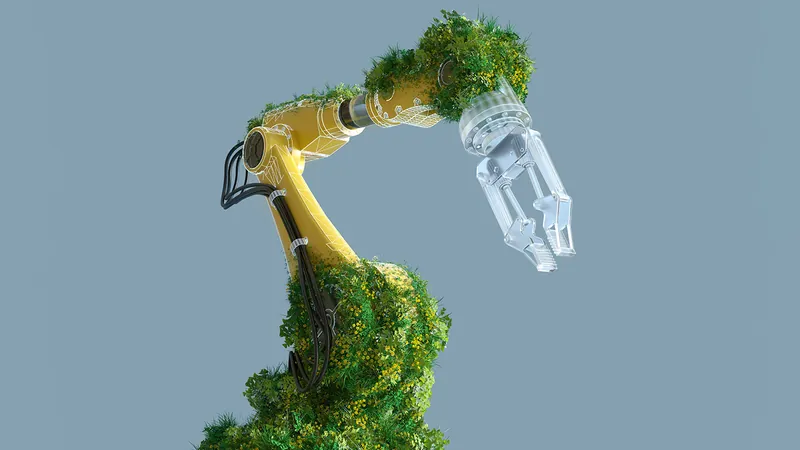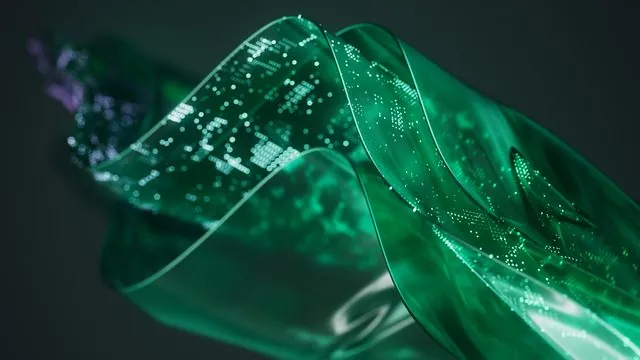
Revolutionizing Robotics: How Plant and Fungi Components are Shaping the Future of Biohybrid Robots
2025-01-15
Author: Daniel
In an exciting twist on technology, researchers are discovering that organic materials, specifically parts of plants and fungi, can significantly enhance the functionality of biohybrid robots. These robots, which integrate biological components with electronic systems, are turning heads in both the scientific community and the tech industry.
The use of living tissues in robotics is not just a scientific novelty; it also opens new avenues for sustainable engineering. By utilizing cells from plants and fungi, these biohybrid robots exhibit remarkable traits, such as self-repair, adaptability, and, intriguingly, the ability to harness the natural processes of their biological components for energy.
What Makes Biohybrid Robots So Unique?
Biohybrid robots combine synthetic and biological materials to create more resilient and responsive machines. For instance, plant tissues can serve as sources of power through their inherent ability to conduct ionic currents. This means biohybrid robots could potentially 'breathe' much like living beings, using natural chemical processes to function. Fungi, on the other hand, offer unique abilities for environmental sensing and can thrive in diverse conditions.
One notable study from a team of materials scientists involved integrating mycelium, the root structure of fungi, with electronic systems. The result is a robot that can detect environmental changes and react accordingly, signaling a huge leap forward in the realms of automation and ecological monitoring. Such robots could revolutionize agriculture by autonomously detecting soil health or plant disease without human intervention.
From Function to Form: The Science Behind It
The science of biohybrid technology hinges on the ability to manipulate cellular structures for specific functions. By understanding the electrical properties of plant and fungi cells—like action potential and electric charge—engineers can design materials that are both functional and biologically compatible. This paves the way for innovations that could lead to robots capable of performing complex tasks, such as repairing themselves or adapting to unforeseen environmental challenges.
The Future is Green: Implications for Sustainability
The incorporation of living organisms into technological platforms not only enhances functionality but also presents a more sustainable approach to robotics. Traditional robots often rely heavily on synthetic materials that can be harmful to the environment. In contrast, biohybrid robots utilize renewable organic resources, helping pave the way towards a greener future.
Researchers are optimistic about the potential applications of such technology, which could range from creating smart sensors in advanced agriculture to developing innovative medical devices that respond more effectively to biological cues.
As technology continues to evolve, one thing is clear: the fusion of biology and robotics is not just a fascinating idea but a revolutionary leap that could redefine how we think about machines and their role in our world. The age of biohybrid robots has arrived, and it's just the tip of the iceberg in a journey toward sustainable innovation. Get ready—this is only the beginning of something truly extraordinary!



 Brasil (PT)
Brasil (PT)
 Canada (EN)
Canada (EN)
 Chile (ES)
Chile (ES)
 Česko (CS)
Česko (CS)
 대한민국 (KO)
대한민국 (KO)
 España (ES)
España (ES)
 France (FR)
France (FR)
 Hong Kong (EN)
Hong Kong (EN)
 Italia (IT)
Italia (IT)
 日本 (JA)
日本 (JA)
 Magyarország (HU)
Magyarország (HU)
 Norge (NO)
Norge (NO)
 Polska (PL)
Polska (PL)
 Schweiz (DE)
Schweiz (DE)
 Singapore (EN)
Singapore (EN)
 Sverige (SV)
Sverige (SV)
 Suomi (FI)
Suomi (FI)
 Türkiye (TR)
Türkiye (TR)
 الإمارات العربية المتحدة (AR)
الإمارات العربية المتحدة (AR)